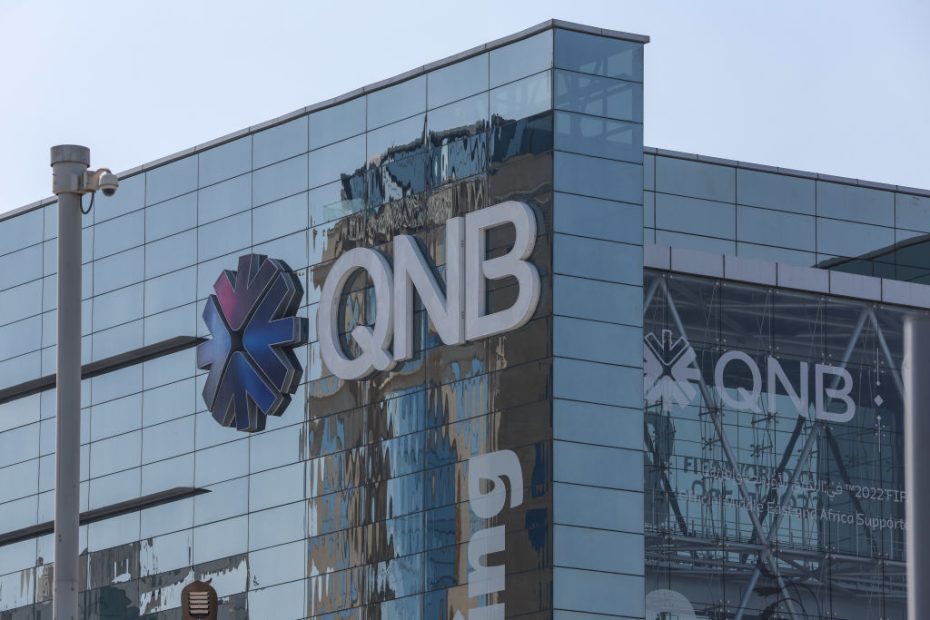QNB Group’s nine-month net profit surges by 8%
The bank’s deposit base rose by 4 per cent between January and September to reach $226bn

Qatar National Bank (QNB) posted an 8 per cent jump in nine-month net profit to $3.3bn (QAR11.9bn), driven by loan growth, a surge in operating income and total assets.
The Qatari lender said its operating income, which surged by 13 per cent to reach $8bn (QAR29bn), underpins the banking group’s continued successful efforts in maintaining growth across a range of revenue lines.
QNB’s deposit base rose by 4 per cent year-on-year (YoY) to $226bn (QAR822bn) in the nine months to September 30, thanks to a strong inflow of customer deposits.
The bank’s loan-to-deposit ratio remained strong at 99.2 per cent as at September 2023– well within the regulatory limits.
Meanwhile, the banking group’s cost-to-income ratio stood at 20 per cent during the period under review, “one of the best ratios among large financial institutions in the Middle East and Africa”.
The ratio of non-performing loans (NPL) to gross loans stood at 3 per cent as at September 2023, reflecting the high quality of the banking group’s loan book and the effective management of credit risk.
QNB set aside $1.7bn (QAR6.1bn) as provision for potential loan losses during the period under review and the NPL coverage ratio remained strong at 100 per cent, underscoring a prudent approach adopted by the bank towards non-performing loans.
The bank’s total equity reached $30bn (QAR109bn) between January and September, a 2 per cent increase compared to the same period a year ago while earnings per share rose by 8 per cent to $0.33 (QAR1.19) per share.
The Qatari lender had QAR1.2tn in total assets at the end of September, up 4 per cent from a year earlier, according to the bank’s earnings filing.
QNB’s capital adequacy ratio (CAR) stood at 19 per cent while the bank’s liquidity coverage ratio (LCR) and net stable funding ratio (NSFR) reached 166 per cent and 102 per cent, respectively. “These ratios are higher than the regulatory minimum requirements of the Qatar Central Bank and Basel Committee,” the bank said in a statement.
GCC banks are reaping windfalls from charging clients higher interest rates as the US Federal Reserve has hiked borrowing costs to combat sticky inflation.
QNB’s sprawling portfolio
Founded in 1964 as the country’s first Qatari-owned commercial bank, QNB has a global workforce of 30,000 employees operating from more than 900 locations and over 4,800 ATMs.
QNB remains the most valuable banking brand in the Middle East with a brand value of $7.7bn up 9 per cent from 2022, according to Brand Finance. Earlier in October, the bank launched QNB Payment Gateway, the first locally established payment gateway in Qatar.
The payment gateway is the latest card acceptance solution set to provide local merchants with a robust, highly advanced payment solution to simplify digital payments performed in e-commerce.
Services such as e-invoicing solutions, local and international digital wallets, online acceptance of QNB loyalty points, and its online instalment plans for merchants’ use are available in the new payment channel.
The bank unveiled a new biometric payment acceptance solution for its merchants in Qatar. Together with its partners, QNB said it will merchant with outlets across the Gulf state to offer customers the simplicity, convenience and security of facial biometric payments.
The innovative solution is based on proprietary facial verification technology developed by PopID, provisioned through QNB’s acceptance network and supported by Visa via tokenisation.
QNB remains the most valuable banking brand in the Middle East with a brand value of $7.7bn up 9 per cent from 2022, according to Brand Finance.




